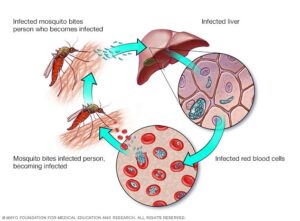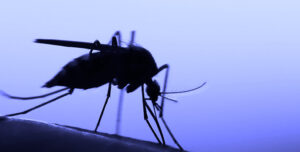READ ALL ABOUT IT
CHECK OUT OUR BLOG FOR CHICAGOLAND & SOUTHERN WISCONSIN
MALARIA WARNING. – 5 New Cases Within The US Borders.
 WHAT IS MALARIA?
WHAT IS MALARIA?
Malaria, a deadly infectious disease transmitted through the bite of infected mosquitoes, was once prevalent in the United States but was successfully eradicated in the mid-20th century. However, recent reports suggest a concerning trend: the resurgence of malaria in certain parts of the country. This development poses a significant public health challenge, necessitating heightened awareness, preventive measures, and timely interventions to prevent the reestablishment of malaria transmission within the United States.
HOW DID MALARIA COME BACK AFTER TWO DECADES?
Malaria’s return in the United States is primarily due to global travel, climate change, insecticide resistance, and gaps in public health infrastructure.
- Global Travel: Easy international travel has led to imported cases of malaria, putting local mosquito populations at risk.
- Climate Change: Altered temperature and precipitation patterns due to climate change create favorable conditions for mosquito breeding and malaria parasite survival, expanding transmission areas.
- Insecticide Resistance: Mosquitoes have developed resistance to insecticides used for vector control, undermining its effectiveness.
- Gaps in Public Health Infrastructure: Weak surveillance systems, limited resources, and lack of awareness contribute to difficulties in detecting and responding to malaria cases effectively.
WHAT CAN WE DO TO PREVENT THE SPREAD?
To address the resurgence of malaria in the United States, a comprehensive approach involving government agencies, healthcare providers, and the public is necessary. The following measures can help prevent and control malaria transmission:
-
- Surveillance and Early Detection: Strengthen surveillance systems to promptly identify imported malaria cases, educating healthcare providers about symptoms and diagnosis.
- Vector Control: Implement robust mosquito control strategies, such as bed nets, indoor spraying, and environmental management to reduce breeding sites.
- Education and Awareness: Raise awareness among healthcare providers, travelers, and the public about malaria risks, preventive measures, and timely treatment.
- Research and Innovation: Invest in research for new tools like insecticides, diagnostic tests, and vaccines to improve malaria control.
Should I Be Concerned?
The reemergence of malaria within the United States is a significant public health concern that demands attention and swift action. By strengthening surveillance systems, enhancing vector control measures, promoting education and awareness, and investing in research and innovation, it is possible to prevent the establishment of malaria transmission and protect public health.
Efforts to control malaria must be collaborative, involving not only healthcare professionals and government agencies but also the active participation of individuals and communities. By working together, we can confront this threat and ensure that malaria does not regain a foothold in the United States.

 WHAT IS MALARIA?
WHAT IS MALARIA?